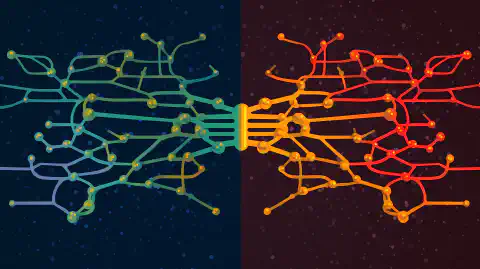Network Plus Course: Bandwidth Management and QoS

Table of Contents
Click Here to Return To the Network Plus Course Page
Introduction
In today’s interconnected world, efficient bandwidth management and Quality of Service (QoS) are critical for maintaining a high-performing network. Bandwidth management involves the allocation and regulation of available network bandwidth, while QoS ensures that different types of network traffic receive appropriate treatment based on their priority. In this article, we will delve into the concepts of bandwidth management and QoS, exploring their principles and techniques, as well as their implementation for prioritizing network traffic.
Bandwidth Management and Traffic Shaping
Bandwidth management plays a crucial role in ensuring fair distribution of network resources, preventing congestion, and optimizing network performance. One of the key techniques used in bandwidth management is traffic shaping.
Traffic shaping is the process of controlling the flow of network traffic by regulating its rate. It allows network administrators to prioritize specific types of traffic, limit bandwidth usage for certain applications or users, and enforce policies to ensure optimal network performance. By shaping traffic, organizations can achieve a more efficient utilization of available bandwidth, preventing bottlenecks and congestion.
Explaining Quality of Service (QoS) Principles and Techniques
Quality of Service (QoS) refers to the ability of a network to provide different levels of service to different types of network traffic. It ensures that critical applications, such as voice or video conferencing, receive the necessary resources and perform reliably, even in the presence of competing traffic. Let’s explore some key principles and techniques of QoS.
Traffic Classification
QoS begins with traffic classification, where network packets are identified and categorized based on their characteristics. These characteristics may include source/destination IP addresses, protocol types, application ports, or other relevant parameters. By classifying traffic, network administrators gain the ability to apply different QoS policies based on the type of traffic, ensuring appropriate treatment for each category.
Traffic Prioritization
Once traffic is classified, QoS mechanisms prioritize traffic based on its importance or urgency. This prioritization ensures that critical traffic receives preferential treatment over less time-sensitive traffic. By assigning different priority levels to different traffic classes, network administrators can allocate bandwidth and resources accordingly, ensuring a smooth and responsive network experience for critical applications.
Traffic Queuing and Scheduling
Traffic queuing is a technique employed by QoS mechanisms to manage network congestion. Different traffic classes are assigned to separate queues, enabling the network to handle bursts of traffic while maintaining fairness and avoiding packet loss. Within each queue, traffic scheduling determines the order in which packets are transmitted, further optimizing the network’s handling of different traffic types.
Congestion Avoidance and Policing
QoS techniques also incorporate congestion avoidance mechanisms to prevent network congestion from occurring in the first place. These mechanisms proactively monitor network conditions and adjust the flow of traffic to prevent bottlenecks. In addition, traffic policing is used to enforce bandwidth limits on specific traffic flows, ensuring that they adhere to predefined policies.
Implementation of QoS for Prioritizing Network Traffic
Implementing QoS involves configuring various network devices and applying appropriate policies to prioritize critical network traffic. Let’s explore some common Ethernet switching features that support QoS implementation.
VLANs and Voice VLANs
Virtual Local Area Networks (VLANs) are used to logically separate a physical network into multiple virtual networks. VLANs enable network administrators to group devices based on factors such as department, function, or security requirements. By assigning specific VLANs to different traffic classes, QoS policies can be applied more granularly.
Voice VLANs are a specialized type of VLAN designed for carrying voice traffic. They ensure that voice packets are treated with high priority, minimizing latency and ensuring clear and uninterrupted voice communication.
Port Configurations and Tagging
Ethernet switches offer various port configurations that allow network administrators to define the behavior of individual ports. Port tagging or 802.1Q enables the identification and labeling of VLAN membership for network traffic. It adds a VLAN tag to the Ethernet frame, allowing switches to differentiate and prioritize traffic based on VLAN membership.
Port Aggregation and Link Aggregation Control Protocol (LACP)
Port aggregation or link aggregation allows multiple physical ports to be combined into a single logical interface. This technique increases bandwidth and provides redundancy. The Link Aggregation Control Protocol (LACP) is commonly used to negotiate and manage link aggregation between switches, enabling efficient utilization of network resources.
Other Ethernet Switching Features
Ethernet switches offer a range of additional features that contribute to QoS implementation:
Duplex settings determine how data is transmitted and received on a network link. Full-duplex allows simultaneous two-way communication, while half-duplex allows communication in only one direction at a time.
Speed settings define the data transfer rate of a network link, such as 10/100/1000 Mbps.
Flow control mechanisms manage data transmission between devices, preventing congestion and ensuring smooth traffic flow.
Port mirroring enables the monitoring of network traffic by replicating packets from one port to another. This feature is useful for troubleshooting and network analysis.
Port security helps protect against unauthorized access by allowing administrators to restrict the devices that can connect to specific ports.
Jumbo frames are Ethernet frames with larger payload sizes. Enabling jumbo frames can improve network efficiency by reducing overhead.
Auto-Medium-Dependent Interface Crossover (MDI-X) is a feature that automatically detects and configures the appropriate cabling for network connections, eliminating the need for crossover cables.
Media Access Control (MAC) address tables maintain records of MAC addresses associated with specific ports, facilitating efficient packet forwarding within a switch.
Power over Ethernet (PoE) and Power over Ethernet Plus (PoE+) enable the delivery of power to network devices over Ethernet cables, eliminating the need for separate power sources.
Spanning Tree Protocol (STP) prevents loops in network topologies by intelligently blocking redundant paths while maintaining network availability.
Carrier-Sense Multiple Access with Collision Detection (CSMA/CD) is an Ethernet access method that detects and resolves collisions when multiple devices attempt to transmit data simultaneously.
Address Resolution Protocol (ARP) and Neighbor Discovery Protocol
QoS implementation also involves protocols that support address resolution and neighbor discovery. Address Resolution Protocol (ARP) resolves IP addresses to MAC addresses, enabling communication between devices within a network. Neighbor Discovery Protocol (NDP) is an IPv6 protocol that performs similar functions to ARP.
As network administrators strive to optimize network performance, bandwidth management and QoS play vital roles in ensuring efficient resource allocation and prioritizing critical traffic. By implementing the appropriate QoS techniques and leveraging common Ethernet switching features, organizations can enhance the performance, reliability, and responsiveness of their networks.
Remember, successful network management requires continuous monitoring, analysis, and adaptation to evolving network demands. Stay up-to-date with industry best practices and consider pursuing certifications like CompTIA’s Network+ Certification to deepen your knowledge and skills in this field.






